The checklists in the method support in identifying problems and possible solutions to human factors questions related to the control room. Explanations to the questions are also given. The questions are phrased so that the "correct" answer is "yes". Each point in the checklists consists of: Click here...
SINTEF search
During the 1980s, the world began to realise that chemicals created by man and used in heat pumps and refrigeration systems were having a negative effect on the environment. In the old days, CO2 was a normal working medium in seagoing air-conditioning systems. Professor Gustav Lorentzen (1915-95)...
...resounded through the energy sector. They were generated by a publication based on measurements taken at an HEP plant in Brazil. It reported that CO2 and methane from rotting organisms in HEP reservoirs could, in the worst case scenario, be responsible for well over a quarter of the planet’s total climate...
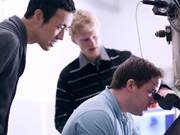
... The project is being financed by the Research Council of Norway (80 per cent) and Hydro itself (20 per cent). SINTEF/NTNU and Hydro are collaborating on the project with materials science groups at Toyama University and the Tokyo Institute of Technology. The project centres on quantifying how the properties...
Voluntary Exam
...the acronym IN-MOD-BER (Modeller og beregninger) and as a "Nasjonalt forskerkurs i realfag". For those interested, there will be an exam in the form of a written essay on topics to be specified later. The length of the essay must be at least 8 A4-pages and no more than 10 A4-pages (with 12 point font)....
Statoil
Statoil is an integrated oil and gas company with considerable international activities. Represented in 33 countries, it is engaged in exploration and production in 15 of these. The group’s head office is in Stavanger, Norway. . At 31 December 2005, Statoil had 25,644 employees. Forty-nine per cent work...
Simulation
...process: Local high cooling rates (~10.000 K/s) and large temperature gradients (~100 K/mm) High shear rates (~ 10.000 s-1) Non-Newtonian fluid mechanics Commercial software for simulating the injection moulding process is useful for optimising part quality and reducing cycle time. However, these software...
Reducing the salt in our food
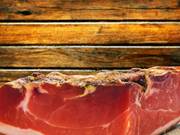
Salt has many beneficial properties. It tastes good, and it increases the shelf life of our food and makes it easier to process many foodstuffs on an industrial scale. But it also contributes to cardiovascular diseases. Since 2008 researchers have been working on the “Low salt products” project with...
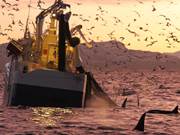
Seagulls and whales waiting for a free dinner outside Skjærvøy in Nordland county. Photo: Alessandro De Maddalena/iStock Standard Up to two-thirds of the fish caught never reach the dinner table. SINTEF researcher Line Skontorp Meidell wants to fix that. Seventy percent of the residual raw materials...

...about when and why outbreaks of disease occur. Now, SINTEF researchers are about to expose the water’s secrets, both to prevent suffering in fish and to save the aquaculture industry a great deal of money. "Disease is the greatest challenge facing this industry, both in financial terms and where its...
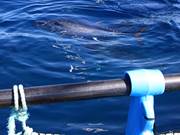
This fish weighs 200 kilos and is one of the broodstock tuna that have supplied the Norwegian company Fortuna Mare with eggs to start industrial tuna farming in Spain. Photo: SINTEF/Jan Ove Evjemo The test-tube contains copepods, which senior scientist Jan Ove Evjemo and his colleagues cultivate as...
Publications
... Socha, M. Elżbieciak, J. Gurgul, P. Nowak, P. Warszyński, and I. Kumakiri Applied Materials & Interfaces, 2(7), 1945-1953 (2010) “Photocatalytic degradation of the humic species as a method of their removal from water – comparison of UV and artificial sunlight (ASL) irradiation efficiency.” J. Dziedzic...
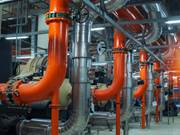
...recent years. The technology has become less expensive and more accessible. However, manufacturers are struggling to meet demand. Photo: Shutterstock Standard SINTEF has developed the world’s ‘hottest’ heat pump together with its industrial partners and colleagues at NTNU. It recently held its third conference...
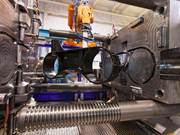
Manufacturing's vision is to show that sustainable and advanced manufacturing is possible in high cost countries, with the right products, technologies and humans involved. Cross-disciplinary research on multi-material products and processes, automated production and innovative organizations will provide a knowledge...
Eagle-eyed robots
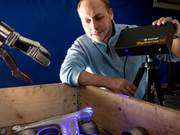
...us. If we want to grab hold of an object, we have to know what it is we’re getting to grips with. And we have to know how far away it is. Viewing the world as a flat image simply isn’t good enough, and the same applies to robots. They have to see their surroundings as they are – in three dimensions....
Publications
Amiri, A. (2010), 'Rheology of silica-based dispersions and Cross-sectional modeling of settling slurries', PhD thesis, NTNU. Amiri, A.; Nuland, S.; Øye, G. & Sjöblom, J. (2008), 'Stability and rheological properties of Aqueous fumed silica suspensions''5th Annual European rheology conference, Cardiff...
What makes us buy electric cars?

...in Norway? The advice from researchers is for the country to continue combining national excise exemptions with instruments that reduce inconvenience and benefit drivers in terms of everyday motoring. Archive photo: Thinkstock The financial benefits granted to owners of electric cars have made Norway...
New appointment as Notified Body
Directive 96/48/EC for the interoperability in the trans-European high-speed rail system. Appointed December 16, 2003. SINTEF can now assess and certify safety and interoperability for rail systems in all EU/EEA countries. SINTEFs railway certification expertise is appointed notified body for conventional...
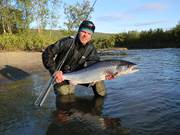
...fisherman got the idea some years ago. Since then, material scientists from SINTEF – the largest independent research organisation in Scandinavia – and industrial designers from Permafrost Design Studio in Oslo have helped him make his idea a reality. The first step into the world market will be the...

...tackle the financing of the acute and increasing costs of mitigating and adapting to climate change. The conference resulted in an agreement on a new collectively quantified target (NCQG) for such financing. The target was set at $300 billion annually between 2026 and 2035. That is a far cry from the...